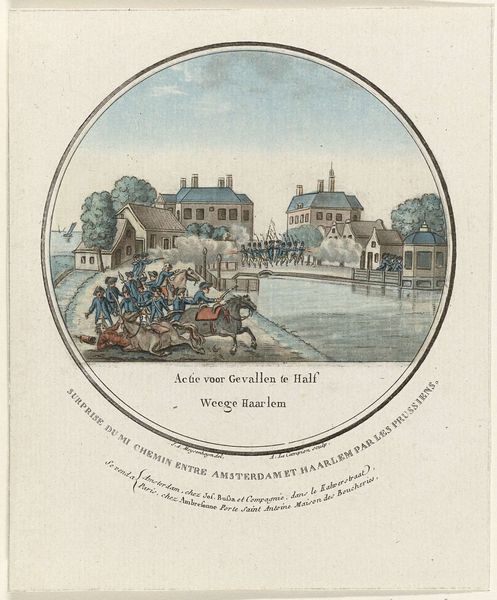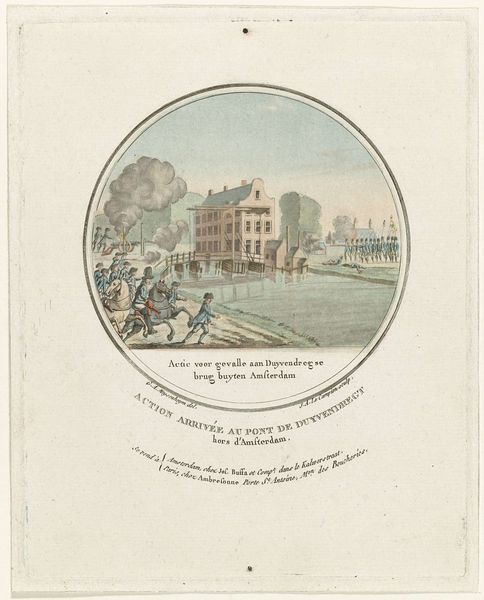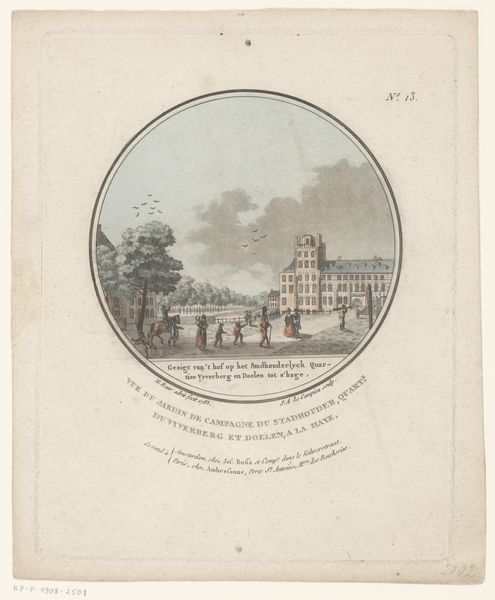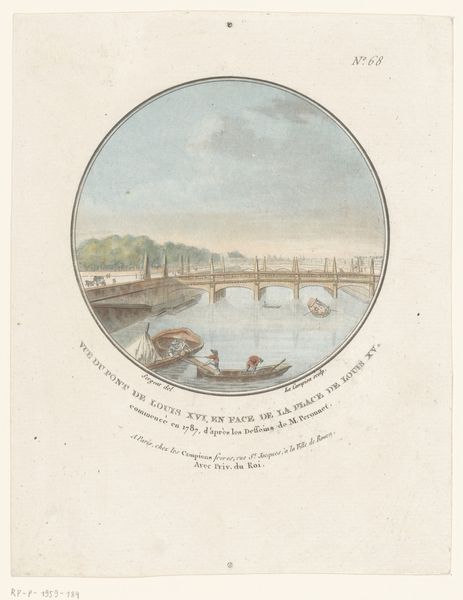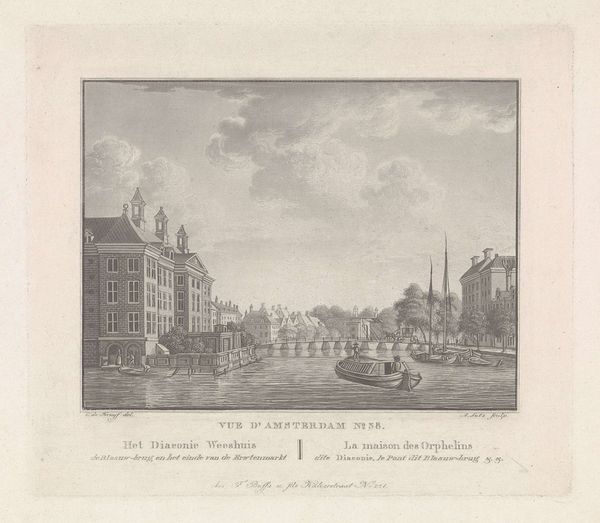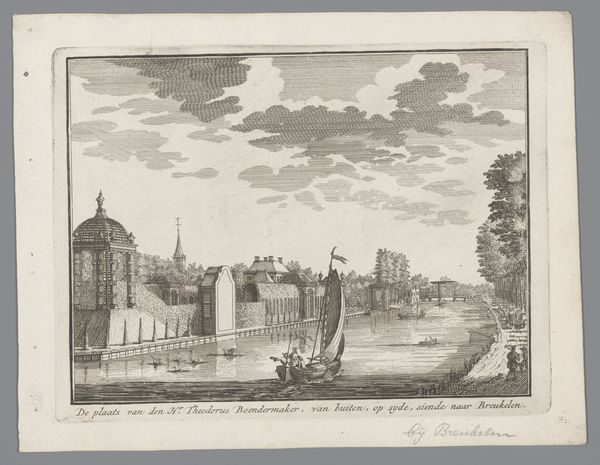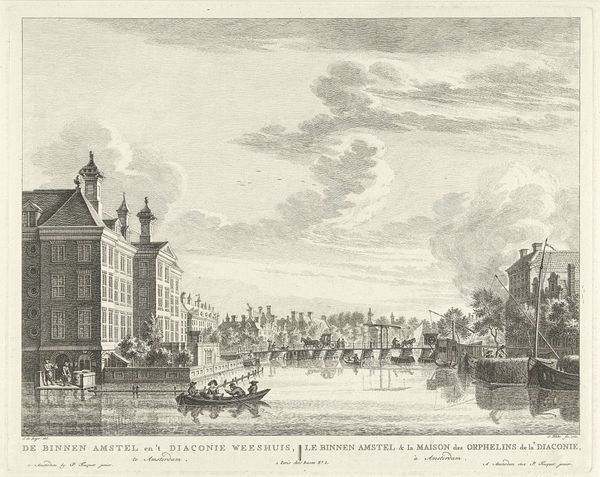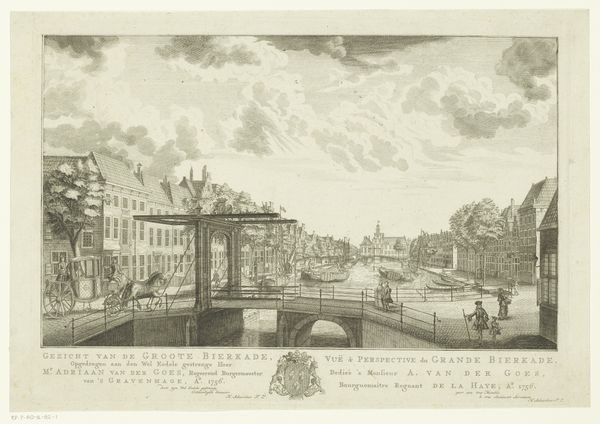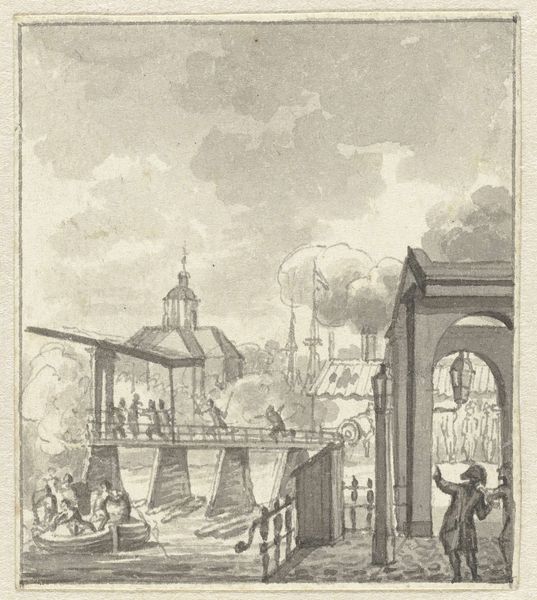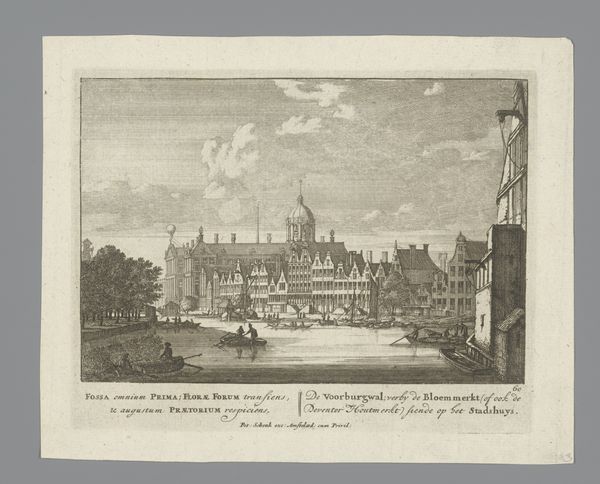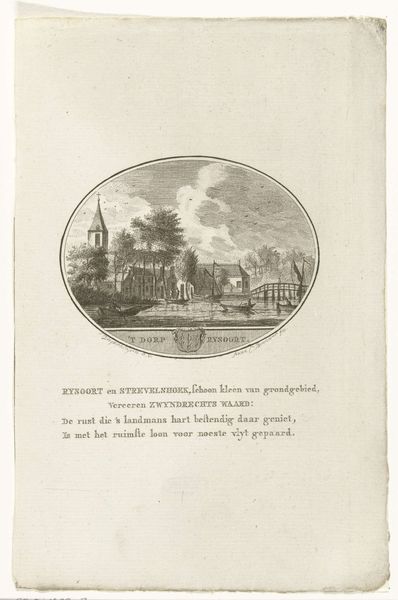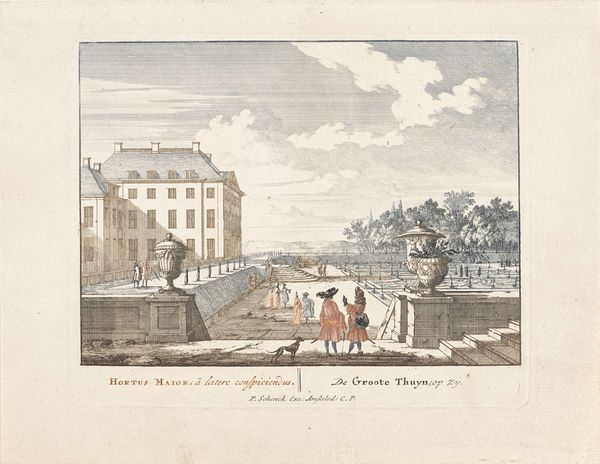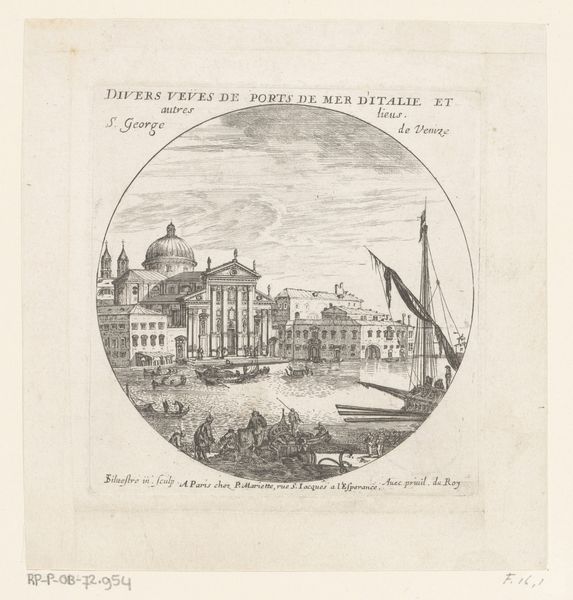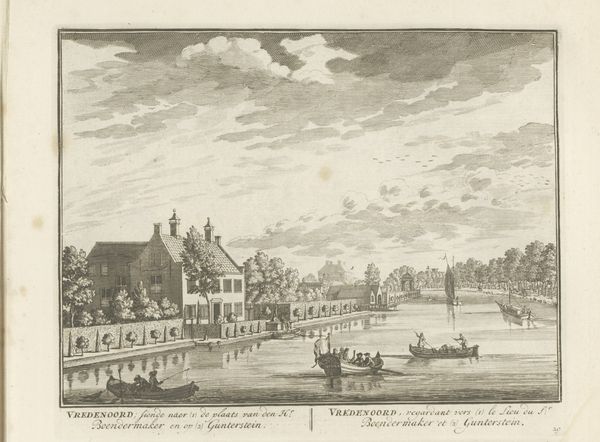
Dimensions: height 160 mm, width 132 mm
Copyright: Rijks Museum: Open Domain
Curator: Immediately, what strikes me is the circular frame. It gives the scene a contained, almost observational quality, as though we're peering through a lens at this historical event. Editor: Indeed. We’re looking at "Aanval bij Ouderkerk aan de Amstel, 1787", which roughly translates to "Attack near Ouderkerk on the Amstel River, 1787." It’s an engraving, made sometime between 1787 and 1790 by Joseph-Alexandre Le Campion. Prints like this, circulated widely at the time, functioned as news media. Curator: News media as a form of propaganda, of course. I'm immediately drawn to how this piece serves as a commentary on power, privilege, and political unrest, showing an "attack" but with almost quaint detachment. Where does power lie in this image, and how does Le Campion position those who wield it? Editor: Let's think about the process. An engraving involves meticulous labor, each line carved into the plate to reproduce this scene. The scale is significant—mass production meant wider consumption, bringing these events and possibly a biased narrative of Dutch society to a broader public. I think the physical effort inherent in printmaking emphasizes the intent to create and disseminate information, reflecting the maker's material labor and therefore investment into production costs to inform and influence. Curator: Exactly! Who paid for it and what kind of cultural narrative did they try to build? Consider the church depicted—prominent and centered. The attack seems to encircle the very symbols of established power structures. Note also that Le Campion creates social stratification; who are the blurred figures carrying out violence versus those we can see in detail? There's a pointed visual commentary being made. Editor: I see the church now—very imposing given the setting, and yes the act of engraving further immortalizes its visual dominance alongside this historical unrest. It makes me think about access; this artwork is housed in the Rijksmuseum, and available now to modern audiences worldwide who were meant to experience this snapshot of societal anxiety from centuries ago. Curator: This print prompts critical questions about conflict, memory, and who shapes our understanding of history. Le Campion’s work highlights how art serves as both historical document and tool for political persuasion. Editor: Indeed. It brings materiality, society and making together. Each stage from development and technique affects social reception and overall worth, underscoring the complexities embedded within something that could otherwise just be called another old cityscape print.
Comments
No comments
Be the first to comment and join the conversation on the ultimate creative platform.
